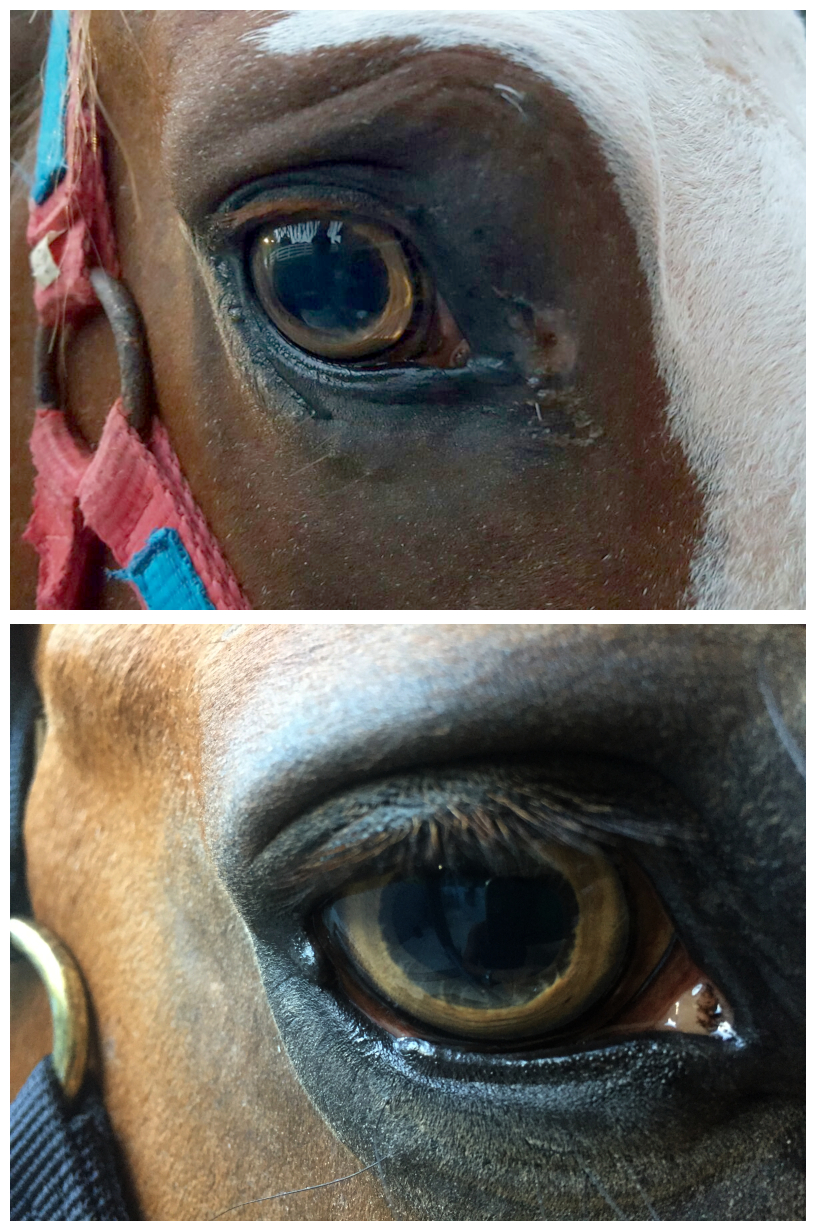Home > Horse Care > Genetic basis for “tiger eye” identified
Genetic basis for “tiger eye” identified
- February 9, 2024
- ⎯ Christine Barakat with Mick McCluskey, BVSc
University of California–Davis researchers have identified two genetic mutations responsible for “tiger eye” in Puerto Rican Paso Fino horses.
As the name suggests, tiger eye refers to a distinct yellow, amber or bright orange iris color. “Tiger eye is especially valued by breeders for its striking appearance,” explains Rebecca Renee Bellone, PhD. The trait is autosomal recessive, meaning one copy of the mutated gene must be inherited from each parent for it to be expressed.

The Davis researchers found that most tiger-eyed horses inherit two copies of the Tiger-eye 1 allele, and a smaller number of horses have one copy of each mutation (Tiger-eye 1/Tiger-eye 2). So far, these two mutations have been detected only in the Puerto Rican Paso Fino horse breed and were not found in any of 196 horses from related breeds that were tested.
Click here to learn how to recognize the subtle signs of eye trouble.
A genetic test for tiger eye is now available at the Veterinary Genetics Laboratory at UC–Davis. “The genetic test is being used to determine the genotype for tiger-eye mates and identify carriers of the tiger- eye mutations to inform breeding decisions,” says Bellone. “For example, if one wanted to produce a tiger-eyed offspring out of a cross between a tiger-eye stallion to a brown-eyed mare, you would want to know precisely the genotype of both the sire and dam. If the tiger-eye stallion has two copies of Tiger-eye 1 allele and the mare is heterozygous (Tiger-eye 1/N) then a cross between the two gives a 50 percent chance of getting a tiger-eye foal. If, however, the mare is not a carrier for either Tiger-eye allele, then this cross would be a poor choice because a tiger-eye offspring could not be produced.”
Reference: “Two variants in SLC24A5 are associated with ‘tiger-eye’ iris pigmentation in Puerto Rican Paso Fino horses,” G3: Genes|Genomes| Genetics, June 2017 (Click here to read study)
This article first appeared in the EQUUS #480
Don’t miss out! With the free weekly EQUUS newsletter, you’ll get the latest horse health information delivered right to your in basket! If you’re not already receiving the EQUUS newsletter, click here to sign up. It’s *free*!





